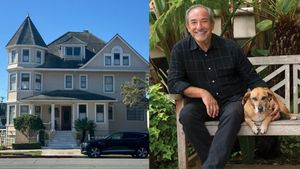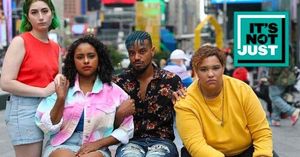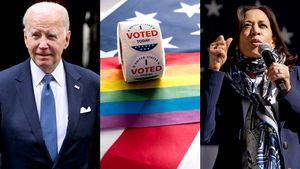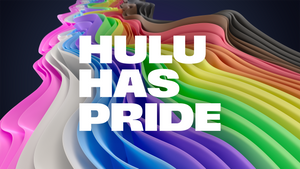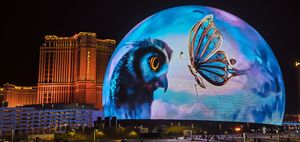“There’s a place for us / Somewhere a place for us…”
If you haven’t thought of the beautiful, haunting song “Somewhere” from West Side Story as an LGBTQ+ plea for a place of love and belonging, you will after viewing the documentaryWest Side Story: The True Story of How Four Gay Men Created America's Greatest Musical.
Keep up with the latest in LGBTQ+ news and politics. Sign up for The Advocate's email newsletter.
The documentary, written, directed, and narrated by historian and college professor David LaFontaine, will have its online premiere Thursday at 8:30 p.m. Eastern, along with a panel discussion, and then will be made available free to colleges around the country as the first entry in the LGBTQ Literature Project. The project aims to look at members of the community who created important works and how their identity informed their efforts.
“West Side Story is, in my opinion, the greatest of all American musicals,” says LaFontaine, a professor of English at Massasoit Community College in Massachusetts; he also has a background in music. But it’s rarely discussed, he says, that its four primary creators were gay men: composer Leonard Bernstein (considered more bisexual recently), lyricist Stephen Sondheim, director-choreographer Jerome Robbins, and book writer Arthur Laurents. He’s setting out to change this. “We’re looking at identity as a source of creative inspiration,” he says.
The half-hour documentary chronicles West Side Story from its origins through its successful Broadway premiere in 1957, the hit 1961 film version, the stage revivals, the balletic and symphonic adaptations, and the film remake in 2021 that was directed by Steven Spielberg.
The idea for West Side Story was inspired by actor Montgomery Clift, then Robbins’s lover, in 1948. Clift asked for advice about playing Romeo in Shakespeare’s Romeo and Juliet, and Robbins suggested Clift imagine Romeo in a modern setting where he and Juliet are kept apart by societal prejudices. (Some have said Clift suggested a modern-day version to Robbins.)
Robbins soon met with Bernstein and Laurents, and they began working on a show with the working title East Side Story, set on the Lower East Side of Manhattan, with the story being that of a Catholic man and a Jewish woman divided by religious intolerance. But Laurents grew tired of the concept, saying it had already been done in the 1920s in the hit Broadway play Abie’s Irish Rose.
In 1955, Laurents and Bernstein revived the project as a story of street gangs and racial prejudice. Robbins agreed to it, and in the fall of that year, Sondheim, only 25 and with no Broadway experience, came on as lyricist. After a period of intense work, West Side Story opened on Broadway in 1957, and the rest is history — a rather long history that is continuing.
The 1961 film version won 10 Academy Awards and had a top-selling soundtrack album, turning West Side Story into a “global phenomenon,” as LaFontaine says in the documentary. Sondheim was a consultant on the 2021 remake, which was released just three weeks after his death, and the show is likely being performed in some community or regional theater right now.
LaFontaine’s film goes into the degrees of the creators’ closetedness, the homophobia and other oppressive forces of their times, how having to hide their true sexuality influenced them to write about forbidden love and a longing for that place “somewhere,” and the homoeroticism in Robbins’s dances and the relationship between the characters Riff and Tony. “Somewhere” became an LGBTQ+ anthem, LaFontaine says, and many of the other songs, such as “Something’s Coming,” resonate with the community.
LaFontaine has taught about West Side Story for four years in the LGBTQ+ literature class he started at Massasoit. “On so many levels, West Side Story resonates positively with students,” he tells The Advocate.
He spent $18,000 of his own money over a year and a half to make the documentary. “I felt it would give us a basis for creating a whole series of documentaries,” he notes. Now the LGBTQ Literature Project is an organization with a board and is seeking funding for the series.
The next documentary set for production will deal with a century of LGBTQ+ literature, starting with Virginia Woolf and ending with Michael Cunningham. This year is the 100th anniversary of the publication of Woolf’s novel Mrs. Dalloway; Cunningham’s novel The Hours, published in 1998, is an homage to Mrs. Dalloway and features Woolf as a character.
“It’s very important to take pride in our community,” LaFontaine says, and he believes that including LGBTQ+ content in school curricula can be a source of that pride. “One’s sexual or gender identity is not just something incidental,” he says, noting that the West Side Story documentary and others in the series will show how identity influences creativity.
With the anti-LGBTQ+, anti-diversity policies coming out of the White House and elsewhere, LGBTQ+ visibility is more important than ever, LaFontaine says. Transgender people, part of the LGBTQ+ rights movement from the beginning, are being marginalized, and the right wing isn’t going to stop there, he says.
On a happier note, he says that creating the documentary was a dream come true. He fell in love with West Side Story on his first exposure to it at age 12, he says.
Beyond his academic career, LaFontaine has a background in activism. He was chair of the Massachusetts Governor’s Commission on Gay and Lesbian Youth (now the Massachusetts Commission on LGBTQ Youth) in the 1990s. Teaching about LGBTQ+ literature and making the documentary series melds art and activism, he says: “I feel that theater is just a wonderful way of communicating a message about human rights.”
To register for the online screening and panel on Thursday, April 3, go to Eventbrite.com.



























